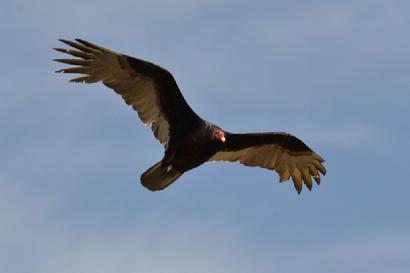 |
| https://heatherandkyle.files.wordpress.com/2013/05/turkey-vulture-05.jpg |
|
| This brings the question as to whether our own Turkey Vulture (Cathartes aura), affectionately called the “John Crow” locally, might be at risk from the NSAID drugs used here. Banamine® is available here and is used by veterinarians in horses, ruminants and dogs. Other veterinary NSAIDS available here include phenylbutazone used mainly in horses, carprofen (Car-o-pet®) for dogs and tolfenamic acid (Tolfedine®) for dogs and cats. Some human drugs such as meloxicam (Mobic®) and nimesulide (Nise®) may also be prescribed on occasion for dogs. Veterinary diclofenac is not registered or known to be available in Jamaica and the human formulation in not normally prescribed for dogs because of the much greater risk of harmful side effects such as stomach ulceration and kidney damage when compared to canine-specific preparations.
The answer to the John Crow question appears to be a reassuring ‘no’. In a study of Turkey Vultures and diclofenac toxicity, published in the Journal of Environmental Toxicology & Chemistry in 2008, it was determined that Turkey Vultures do not suffer the same toxic effects seen in the Old World Gyps sp. This study did not evaluate other NSAIDs, so some questions may remain. Also, the fact that NSAIDs are used in only a relatively small number of animals compared to the total population, and the practice of burying or incinerating carcasses suggest that the chance of exposure of our vultures to drug residues in carcasses they consume is very low.
References
1 - Barnett A., Rattner, Maria A., Whitehead, Grace,Gasper, Carol U., Meteyer, William A., Link, Mark A. , Taggart, Andrew A., Meharg, Oliver H., Pattee Deborah J., Pain, APPARENT TOLERANCE OF TURKEY VULTURES (CATHARTES AURA) TO THE NON-STEROIDAL ANTI-INFLAMMATORY DRUG DICLOFENAC, Environmental Toxicology and Chemistry, Vol. 27, No. 11, pp. 2341–2345, 2008
2 - J. Lindsay Oaks, Martin Gilbert, Munir Z. Virani, Richard T. Watson, Carol U. Meteyer, Bruce A. Rideout, H. L. Shivaprasad, Shakeel Ahmed, Muhammad Jamshed Iqbal Chaudhry, Muhammad Arshad, Shahid Mahmood, Ahmad Ali & Aleem Ahmed Khan Diclofenac residues as the cause of vulture population decline in Pakistan NATURE | VOL 427 | 12 FEBRUARY 2004
3 - Zorrilla, I., Martinez, R., Taggart, M. A. & Richards, N. Suspected flunixin poisoning of a wild Eurasian Griffon Vulture from Spain Conserv. Biol. http://dx.doi.org/10.1111/cobi.12417 (2014).
For an article from the Windsor Research Centre in Trelawny on our Turkey Vultures , click HERE.
|